After High Schooler Experiences Cardiac Arrest Symptoms, Friend and Coach Save His Life
Drew Strasser, 18, had just finished his warm-up laps at tennis practice when he lurched toward the wall to brace himself before slumping down, unconscious. His teammate and friend Jake jumped into action performing CPR on him while a coach, Jesse Atkinson, rushed to get an automated external defibrillator (AED) to jolt his heart. Their quick action likely saved the teen’s life.
“I never would have thought it would be my kid,” Laneia Strasser, 38, of Rochester, Indiana, told TODAY. “His friend, his 18-year-old teammate who works as a lifeguard — luckily he handled the situation right. Nobody knows how you’re going to react to a situation like that, and he did what he needed to do.”
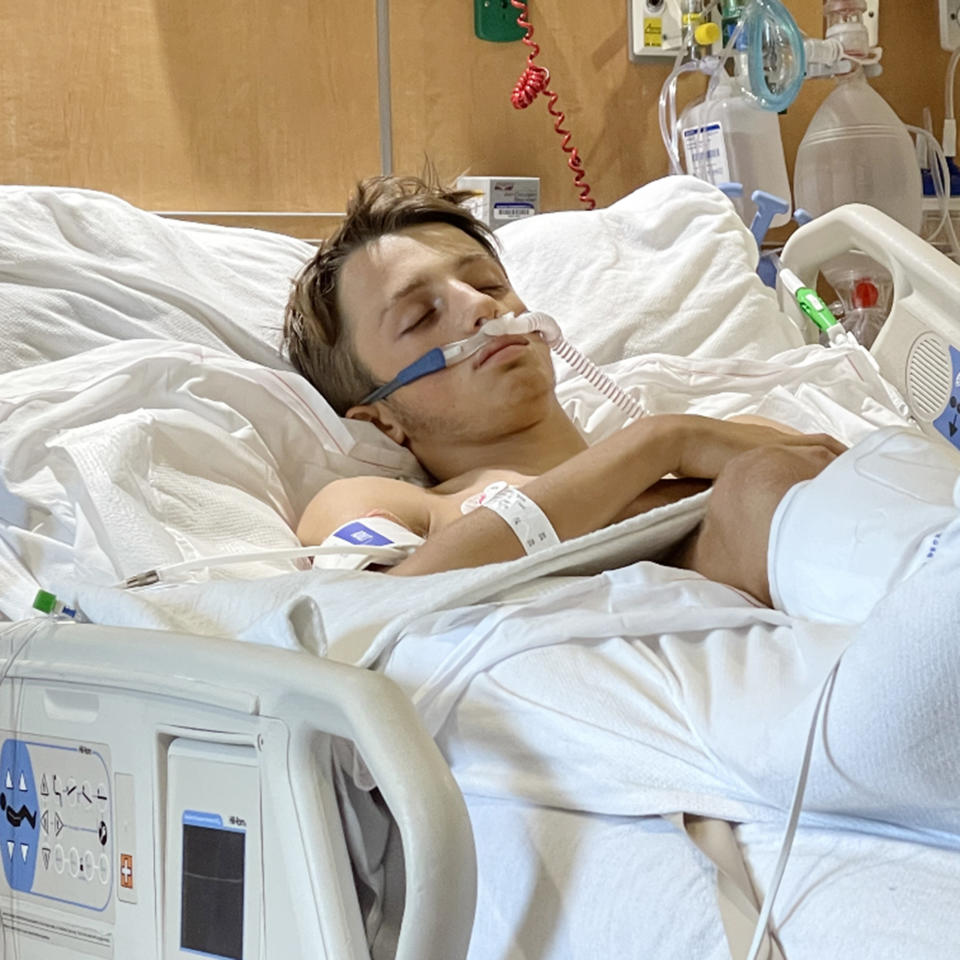
Early practice ends in an emergency
On Aug. 5, Drew Strasser woke early and left the house at 5:30 a.m. to attend tennis practice. He drove himself to the school and started running warm-up laps in the gym when he suddenly collapsed. Immediately, Jake started CPR while Atkinson rushed for the AED to assist while someone called 911. That day the team happened to be in the gym at the school, a lucky turn of events as there was no AED on the tennis courts.
“It wouldn’t have been as likely that they could have saved his life with the AED had he not be inside the school in close proximity to it,” Laneia Strasser said.
The ambulance took him to a hospital about an hour north, and doctors worked to stabilize him. When the Strassers, who were still at home before work, received the call, they weren’t sure what to think.
“(The police officer) didn’t really say that they thought it was an issue with Drew’s heart,” Laneia Strasser said. “He just said, ‘Drew fell at practice. He’s unconscious. He wasn’t breathing.’”
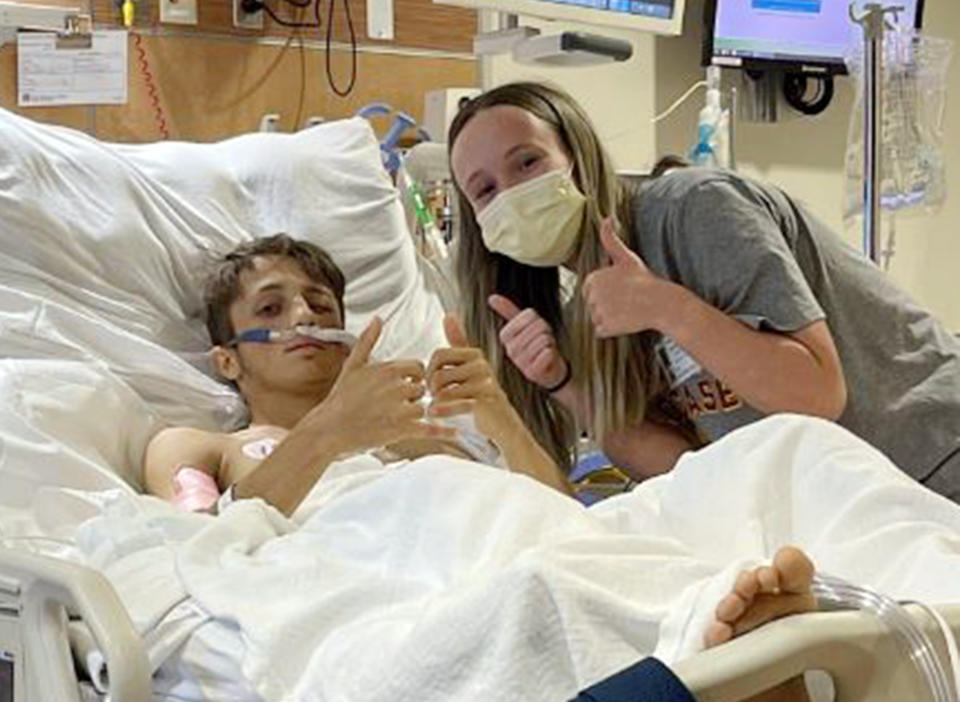
His parents wondered if Drew Strasser experienced a seizure, so his mom called the principal to try to find out more information. The EMT thought it might've been a heart attack. Once the Strassers got to the hospital, they received a little more information.
“They told us, ‘No he didn’t have a heart attack. It was that he was in sudden cardiac arrest,” Laneia Strasser said. “It was very traumatic. Scary, scary, scary morning.”
("Sudden cardiac arrest" is defined as the "abrupt lost of heart function, breathing and consciousness" whereas a heart attack is when "blood flow to a part of the heart is blocked," according to Mayo Clinic. A heart attack may trigger sudden cardiac arrest.)
His parents couldn’t believe what was happening. Drew Strasser always participated in sports and never had any health problems. Just three weeks earlier, he'd visited his doctor for a physical, and nothing abnormal with his heart was detected.
“We were just shocked. It didn’t seem real. He’s never had any passing-out moments before,” Laneia Strasser said. “He’s never had any signs of heart issues. It just completely came out of the blue.”
After doctors at the nearby hospital stabilized the teen, he was transferred to Riley Hospital for Children in Indianapolis, where doctors tried to figure out why his heart wasn’t working properly. Seeing him in the cardiac intensive care unit on a ventilator with no explanation for he went into cardiac arrest was already tough for Drew Strasser's parents. But then, he became seriously ill.
“By Sunday, he had developed a lung infection, and he took a turn for the worse,” Laneia Strasser said. “His blood pressure kept dropping really low. They (gave) him really strong antibiotics.”
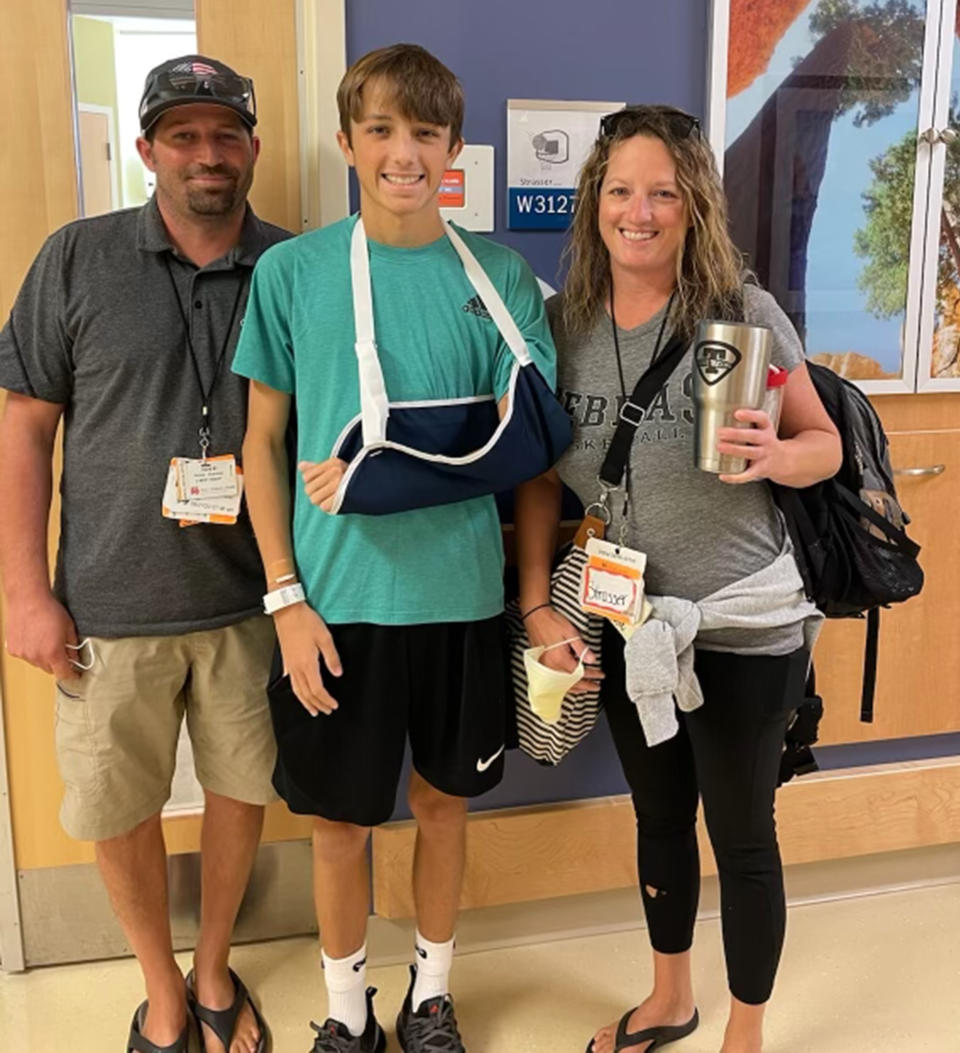
Drew Strasser eventually stabilized, and doctors weaned him off the ventilator. Leneia and Andy Strasser felt some relief when he could talk with them.
“He was very disoriented when they took him off the ventilator. He knew where he was, but he kept getting confused like, ‘Why am I here?'” his mom recalled. “We had to keep explaining to him multiple times, ‘You collapsed at tennis.’”
After a few days, he was able. to remember why he was in the hospital. But he still felt surprised by his situation.
“I didn’t believe what was going on because I hadn’t thought anything was wrong before, and I’ve never had anything like this happen at all,” Drew Strasser told TODAY. “It’s scary and confusing.”
Doctors couldn’t find the underlying cause of the teenage athlete's sudden cardiac arrest, so they recommended an implantable cardioverter-defibrillator (ICD) be placed in his chest. That way, if he ever experienced an erratic heartbeat, the device would shock his heart back into a healthy rhythm. It sounded scary to Drew Strasser, but one of his doctors had one and talked to him about it.
“He was able to tell me more about it than the cardiologist could, and I was assured that everything was going to be OK and that I’d be able to do normal things and go back to normal life,” he said. “My parents were more nervous than I was. I was relaxed about it.”
Laneia Strasser said she was scared, but they wanted their son to have "the best quality of life."
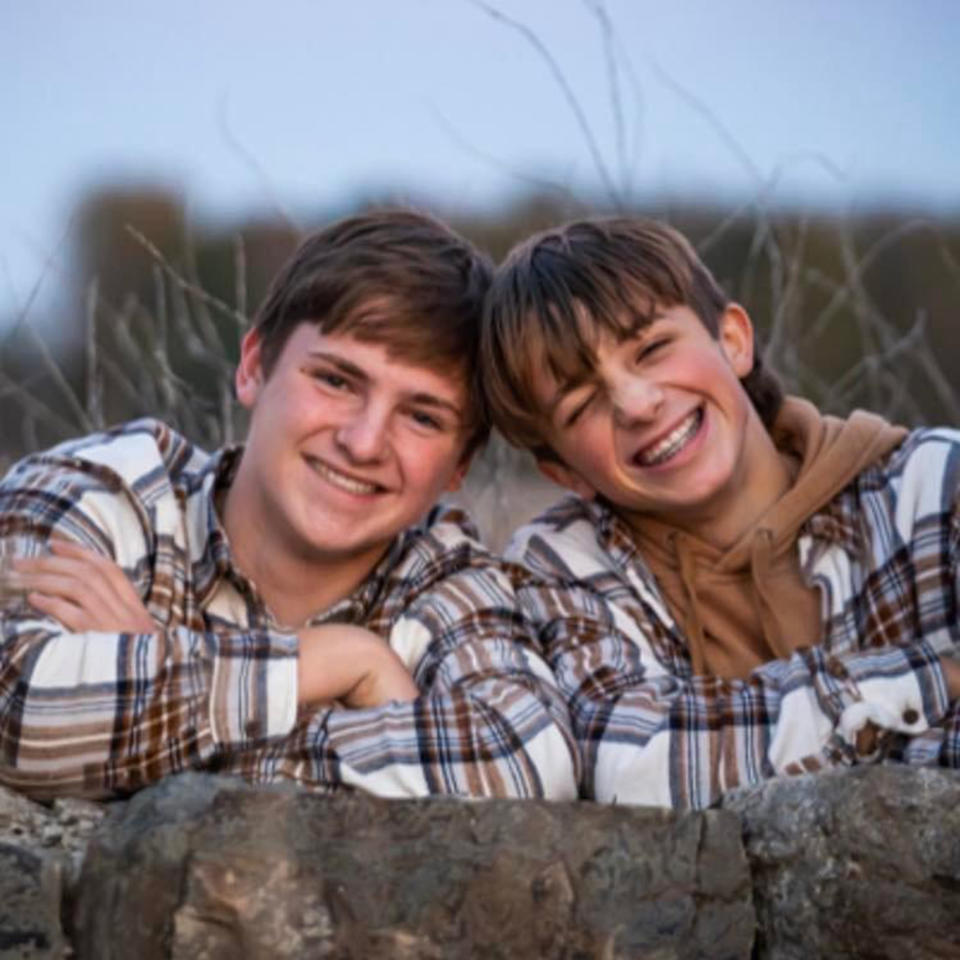
Sudden cardiac arrest in kids and adolescents
Sudden cardiac arrest is the leading cause of death in high-school athletes, according to Dr. Adam Kean, who treated Drew Strasser during his stay at Riley Hospital for Children.
“Even though it is the No. 1 cause, it is remarkably rare, which is important,” Kean, a pediatric cardiologist, told TODAY. “We estimate that one in 30,000 die children of cardiac arrest each year, and that sounds incredibly small. But that’s still around 2,000 children in the United States each year.”
Some children and teens who experience sudden cardiac arrest will be diagnosed with heart conditions, such as hypertrophic cardiomyopathy, long QT syndrome or catecholaminergic polymorphic ventricular tachycardia. In younger people, the causes of sudden cardiac arrest usually aren't tied to behaviors.
“This is very, very different than the adult population, (for whom) the No. 1 cause of death is still going to be coronary artery disease,” Kean said. Coronary artery disease is usually caused by high cholesterol, high blood pressure, not exercising enough or tobacco use. “Children don’t get coronary artery disease unless they have a genetic predisposition," Kean explained.
This means that, in some cases, heart conditions in a child aren’t detected until the child experiences sudden cardiac arrest.
“A lot of children, we won’t see anything until something terrible has already happened,” Kean said. “Drew’s a great example of this. (He was) getting what we would consider good primary care for the vast majority of his life and (had) zero issues.”
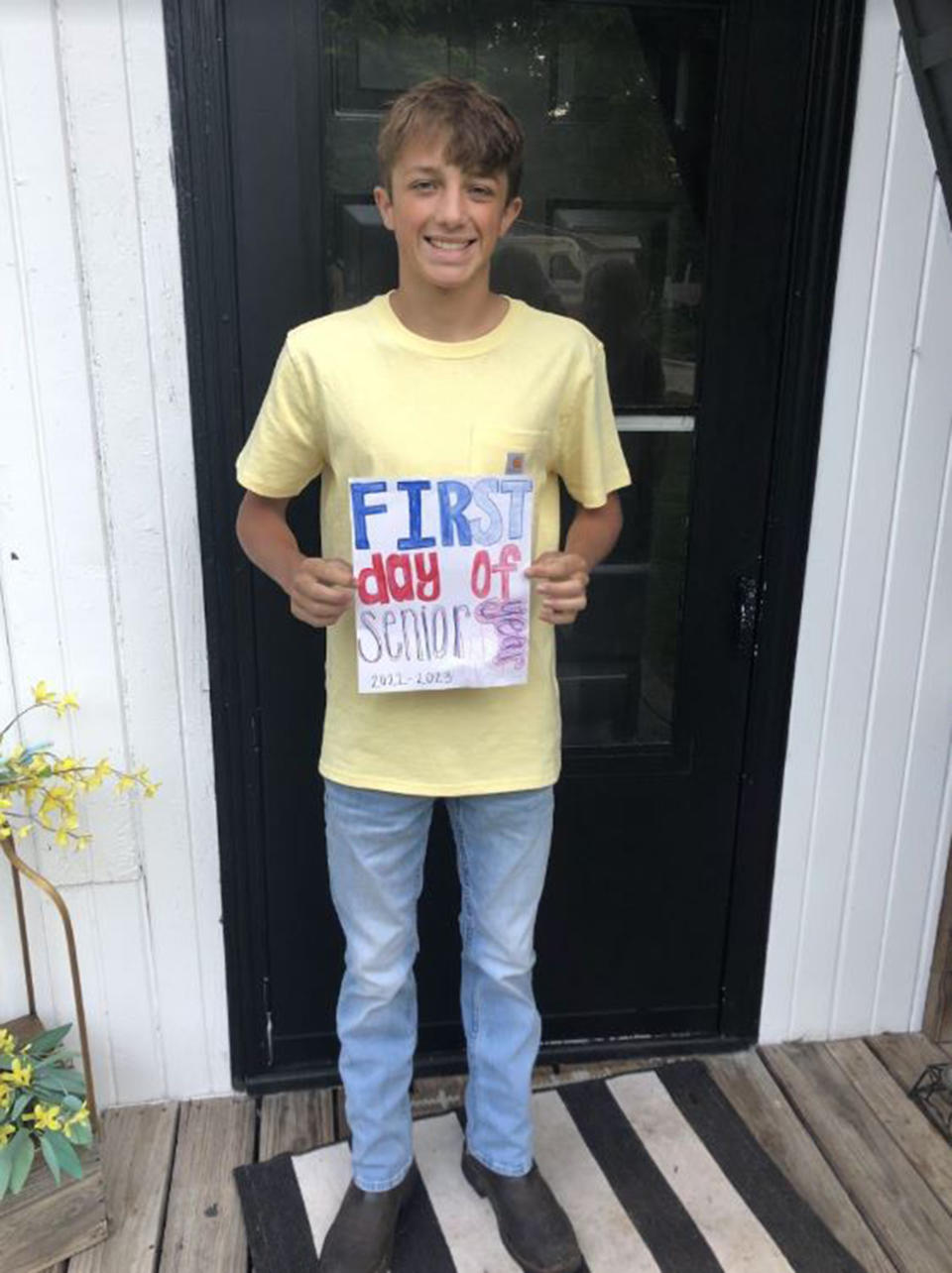
The doctors remain unsure why Drew Strasser experienced sudden cardiac arrest.
“If there is a reversible cause or something that we can treat, we do not need the ICD,” Kean said. “His diagnosis is what’s referred to as idiopathic ventricular fibrillation, which basically means we don’t have another diagnosis.”
Kean said quick action by his teammate and coach made a huge difference in Drew Strasser's outcome.
“(You) need to get an AED on the scene as quickly as possible and do everything (you) possibly can to decrease the amount of time from someone getting down to getting first responders on the scene,” Kean advised. “It’s the single most important thing.”
Life after cardiac arrest
The day after getting his ICD placed on Aug. 26, Drew Strasser returned home. At first, he couldn’t lift anything over 10 pounds, raise his left arm above his shoulder or be submerged in water as he recovered from having the device implanted. But by the last match of the season, Kean had medically cleared him to play tennis, and he joined Jake for a doubles game, which they lost.
“I was hoping we would win, but I was more grateful that I got to play before the end of the year, especially since I was with Jake, the person who gave me CPR,” Drew Strasser said. "That’s a really special bond."
While he feels a little tired at but overall great, his parents feel like they have a “little bit of PTSD," Laneia Strasser said.
“We have to remind ourselves that his heart functioned properly for 18 years, and we can’t just freak out and think that’s going to happen instantly again,” she continued. “It’s always going to be in the back of our minds. I’m trying to trust God that he protected him up until this point.”
The Strasser family hope that their story inspires more screenings for student athletes and raises awareness of CPR and AED interventions.
“It would be good if there was obviously (a diagnosis of) what his heart condition (is)," Andy Strasser, 38, told TODAY. "We still have no idea what caused his cardiac arrest. It would be good (to learn) more about what causes kids to have cardiac arrest."
"This stuff is detectable with more screening, so I think it would be good, when kids get their physical to play sports every year, they get a checkup with their doctor, have a couple more tests in there and maybe prevent cardiac arrest."
This article was originally published on TODAY.com

